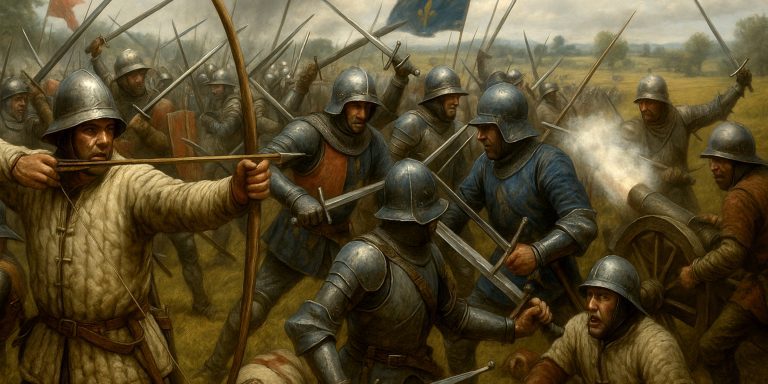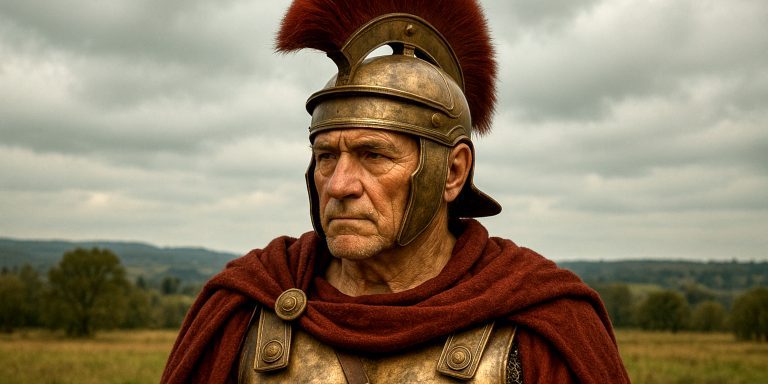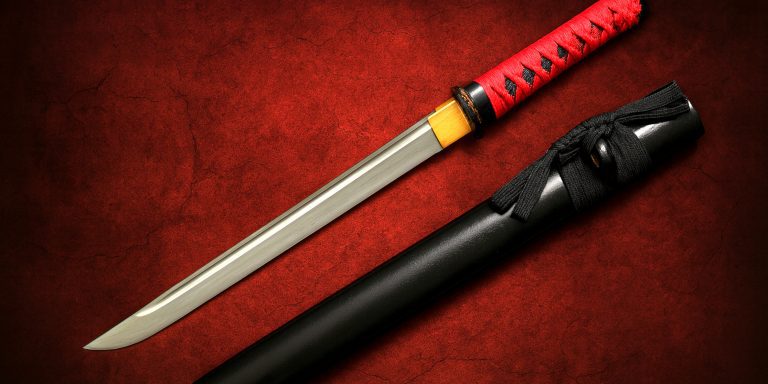
English Swordsmiths
Several notable English swordsmiths throughout history have contributed to the development and craftsmanship of swords. These swordmakers were skilled artisans, and their works were often highly valued. Here are some of the most important English swordsmiths, both historical and modern:
Robert Mole & Sons (active early 19th to early 20th century, Birmingham)
Robert Mole was among the most prominent swordmakers in Victorian England. The firm began producing blades in the 1830s and became a major supplier to the British Army, crafting cavalry sabres, infantry swords, and naval cutlasses. Mole blades were renowned for their even tempering and strength under stress, tested rigorously before acceptance into service.
The company was appointed sword cutlers to the War Office, and a Mole cavalry sabre is referenced in an 1857 military review as being “faultless in its curvature and exact in balance.” Surviving examples of Mole swords often bear their Birmingham address on the ricasso and are prized by collectors for their martial authenticity.
Andrea Ferrara (active 16th–17th century, Scotland and northern England)
Though likely of Italian or Spanish origin, Ferrara became a legendary name in Britain, particularly associated with the Scottish Highlands. His blades were widely used in England as well, especially by Border Reivers and cavalry units. Many “Ferrara” swords were marked with his name, though later the mark became more of a quality stamp than a direct signature.
Known for his use of twisted steel rods and superior welding techniques, Ferrara produced blades that were flexible and nearly unbreakable. An English pamphlet from the early 1600s praises “a blade of Andrea Ferrara, that bendeth full, yet breaketh not.” His work had such cultural weight that in Scotland, “a good Ferrara” became shorthand for a trusted sword.
Samuel Harvey (active mid-18th century, Birmingham)
Samuel Harvey was one of the foremost swordsmiths of the Georgian era, particularly known for producing British infantry hangers and naval cutlasses. He operated out of Birmingham, which had by then become the centre of English edged weapon manufacture. Harvey’s swords often featured a simple crown stamp and his surname across the forte.
He supplied blades to both the British military and privateers, and his weapons were carried during the Seven Years’ War and American Revolutionary War. An 18th-century naval inventory lists “cutlass of Harvey make, sharp-edged and well-struck.” Many of his blades were fitted with plain brass hilts, made for hard use in close combat.
Shotley Bridge Swordmakers (active late 17th to early 18th century, County Durham)
A group of skilled German swordsmiths, possibly from Solingen, settled in Shotley Bridge during the late 1600s. Their arrival marked a surge in quality English blades. Names like Ole Krans and Hermann Mohll are associated with the group, who brought continental forging techniques to the North of England.
They produced double-edged rapiers, broadswords, and backswords, often marked with running wolves or intricate pattern-welding. A 1703 record from the Worshipful Company of Cutlers in London refers to “fine northern blades, well-formed and resilient,” likely a reference to Shotley Bridge output. Though the industry eventually declined, it left a lasting imprint on English sword-making.
Thomas Gill (active late 18th to early 19th century, London and Birmingham)
Gill was a major supplier of military blades during the Napoleonic Wars. He received contracts to manufacture swords for cavalry and infantry units and is best known for the 1796 light cavalry sabre, which combined a curved cutting blade with a relatively light hilt suitable for fast movement.
Gill advertised that his swords were “warranted to stand the severest trials,” and many officers specifically requested his make. Surviving examples show careful grinding, deep fullers, and effective blade curvature, making them excellent cutters. His firm was part of the movement to professionalise British arms supply during a time of massive mobilisation.
James Wilkinson & Sons (active 19th–20th centuries, London)
Wilkinson became the benchmark for British sword-making during the Victorian era and into the 20th century. Founded in 1772, the company became particularly influential under Henry Wilkinson, who developed rigorous blade-testing techniques and maintained a full register of swords ordered and sold.
Wilkinson swords were used across the Empire, from India to Sudan. The company produced presentation swords for officers, general-issue military sabres, and later bayonets. A letter from the Duke of Cambridge in 1875 states, “A Wilkinson blade is the standard to which others must be compared.” Their detailed ledgers, still held in archive, allow historians to trace many individual blades.
Benjamin Stone (active 17th century, London)
Stone was a London-based swordsmith known for producing finely etched basket-hilted broadswords and civilian rapiers. He was a member of the Worshipful Company of Cutlers and is recorded in the 1670s as supplying swords to English officers returning from service in the Low Countries.
His blades are often signed “B. Stone” near the hilt and feature decorative flourishes in the fuller or along the ricasso. A 1678 trade inventory describes his work as “sound of steel and rich in finish.” Surviving Stone swords are often found with swept or shell hilts, reflecting both martial and fashion trends of the Restoration period.
Legacy
A British cavalry manual from 1812 recommends “Gill or Mole blades as tested by action and worthy of charge.” The East India Company likewise stipulated in their contracts that “Wilkinson swords only shall be issued to officers bound for service.”
From Shotley Bridge’s continental craftsmen to the industrial might of Birmingham and the bespoke refinement of London, English swordsmiths balanced craftsmanship with evolving demands of empire, war, and ceremony. Their legacy lives in regimental museums, military archives, and private collections, testifying to centuries of innovation and steel mastery.



